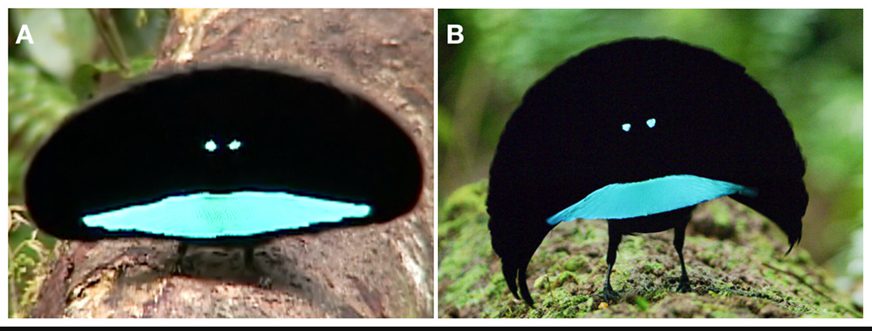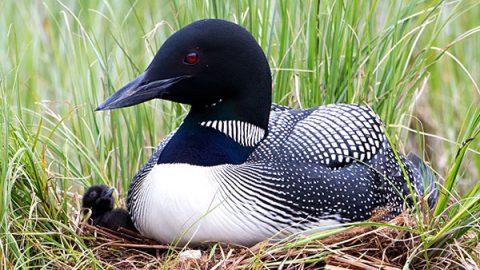New Vogelkop Superb Bird-Of-Paradise Changes Up the Old Song and Dance
By Marc Devokaitis
June 13, 2018From the Summer 2018 issue of Living Bird magazine. Subscribe now.
Introducing the Vogelkop Superb Bird-of-Paradise (Lophorina niedda), now recognized as a new species, thanks in part to its smooth dance moves.
In 2016, Cornell Lab of Ornithology researcher Ed Scholes and photographer Tim Laman were on a multimedia expedition for the Birds-of-Paradise Project in the far western region of New Guinea, called the Bird’s Head (or Vogelkop) peninsula, when they happened to hear a distinctive song. Scholes and Laman knew the population of Superb Bird-of-Paradise found there sang a different song than individuals elsewhere in New Guinea, so they set up their gear to record the bird’s courtship behavior—the first time the behavior of this western population had ever been filmed.
The Superb Bird-of-Paradise (now called the Greater Superb Bird-of-Paradise) is a somewhat well-known bird. The species shot to stardom after the male’s courtship dance appeared on David Attenborough’s Planet Earth series. For a mating display, the male fans its feathers out to form a pitch-black oval highlighted by electric-blue feathers—suggesting a smile and a pair of eyes—and hops excitedly around a female.

But as Scholes and Laman watched this new western bird’s routine, they noticed subtle novelties in the display. This bird slid from side to side instead of hopping, and its feathers fanned out to a crescent instead of an oval.
These and other differences—published in the journal PeerJ by Scholes and Laman—were enough to suggest this was a new species. Their findings were bolstered by another team’s research that confirmed via DNA analysis that the Vogelkop population of the Superb Bird-of-Paradise was genetically distinct.
The Vogelkop Superb Bird-of-Paradise is the latest discovery from the Cornell Lab’s Birds-of-Paradise Project, a research and education initiative to document, interpret, and protect the birds-of-paradise, their native environments, and other biodiversity of the New Guinea region—one of the largest remaining tropical wildernesses on the planet. For more information, visit The Birds-of-Paradise Project.

All About Birds
is a free resource
Available for everyone,
funded by donors like you
American Kestrel by Blair Dudeck / Macaulay Library


